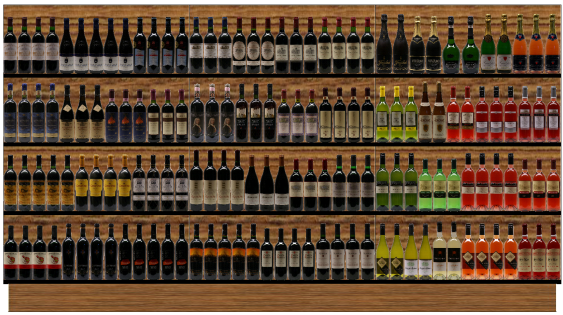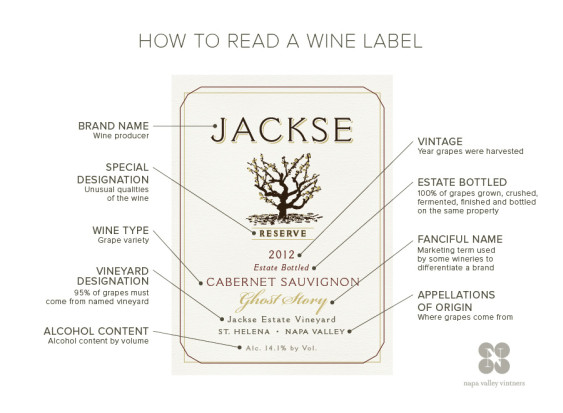It’s just another manic Monday, and if you’re anything like me, you’re in a hurry to catch up from a weekend of goofing around. That’s why, to save you some time, this is a special Math Monday edition of Cluster Crush that will help you decode wine labels in a jiffy.

All those labels can be confusing…but not if you know what to look for. Photo credit: Schappenplannen.
Luckily, what’s on the label can tell you a lot about what’s inside that bottle of wine. So knowing a few essential facts and figures can save you time at the wine store or restaurant, and make you look like a pro in front of your friends.
Per the Alcohol & Tobacco Trade and Tax Bureau, wine labeling in the US must adhere to the following rules (among others) that help consumers determine exactly what they’ll be drinking. Here are the most important.
To display the name of a single grape variety like Chardonnay or Pinot Noir, not less than 75% of the wine must be derived from that variety. This also means that just because a wine bears the name of a grape variety, it’s not necessarily a single-varietal wine. Up to a quarter of it can be made from other grapes.
If a bottle lists an appellation of origin that is a state or county, such as Napa or Sonoma, at least 75% of it must be made from fruit grown within the state or county designated.
If a bottle lists a specific American viticultural area, or “AVA,” such as Carneros, the Russian River Valley, or the Santa Lucia Highlands, at least 85% of the grapes used to make it must be grown within the AVA. In addition, if a bottle is labeled “California,” 100% of the grapes must come from there.
In the case of foreign appellations, the wine must also conform to the requirements of the foreign laws and regulations governing its composition, production and designation within the country of origin (and boy, do these get complicated!).
To bear a vintage, or year, on the bottle, at least 95% of the wine must have been derived from grapes harvested in the labeled calendar year.
If a label includes a vineyard designation, 95% of the grapes must be grown in the named vineyard.

Just a quick glance at the label can tell you a lot! Image credit: Napa Valley Vintners.
The term estate-bottled may only be used if the bottling winery is located within the viticultural area mentioned on the label, grew 100% of the grapes used to make the wine on land owned or controlled by the winery and within the boundaries of that same viticultural area, and crushed the grapes, fermented the juice, aged and bottled the wine in a continuous process on the premises of the winery.
If a wine says Reserve on the label…this might or might not mean anything. In the US, some wineries might use it to designate their higher-quality production. But just as often, it’s a marketing ploy, and since there are no rules governing its use, you can’t depend on it to tell you anything about the wine. In wines from other countries and regions, such as Spain’s Rioja, there are often complicated rules about what can be called reserve…which I’ll get to in future posts.
When it comes to alcohol content, producers are allowed a margin of error of plus or minus 1.5% if the wine’s alcohol content is 14% or less, and a margin of error of 1% if the wine is more than 14% by volume. So that Zinfandel that says it’s 14.5% alcohol by volume could, in fact, be up to 15.5%!
If you just know how to read the label, you can learn most of the pertinent details about the wine you’re buying in a few seconds. So what are you waiting for? It’s Monday morning, and you’ve got a big week ahead, so get out there and buy some wine!

